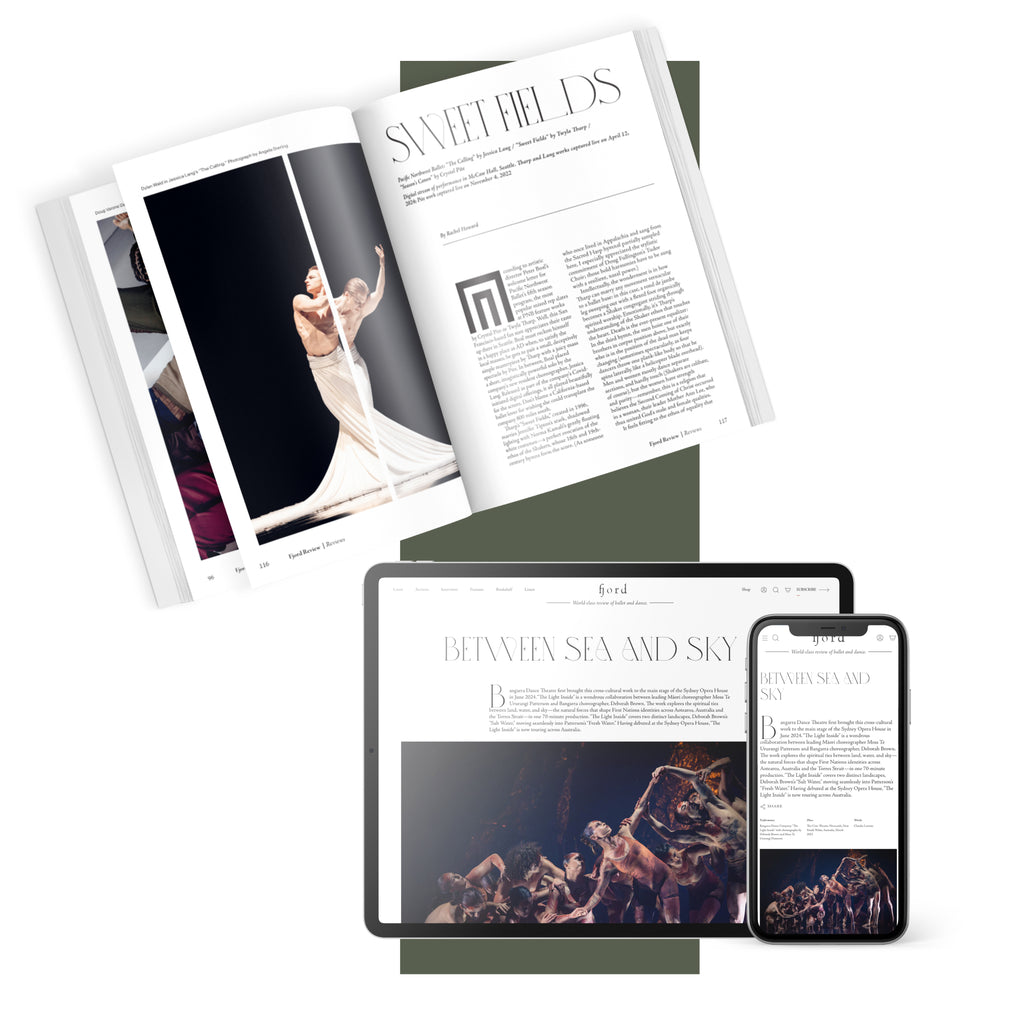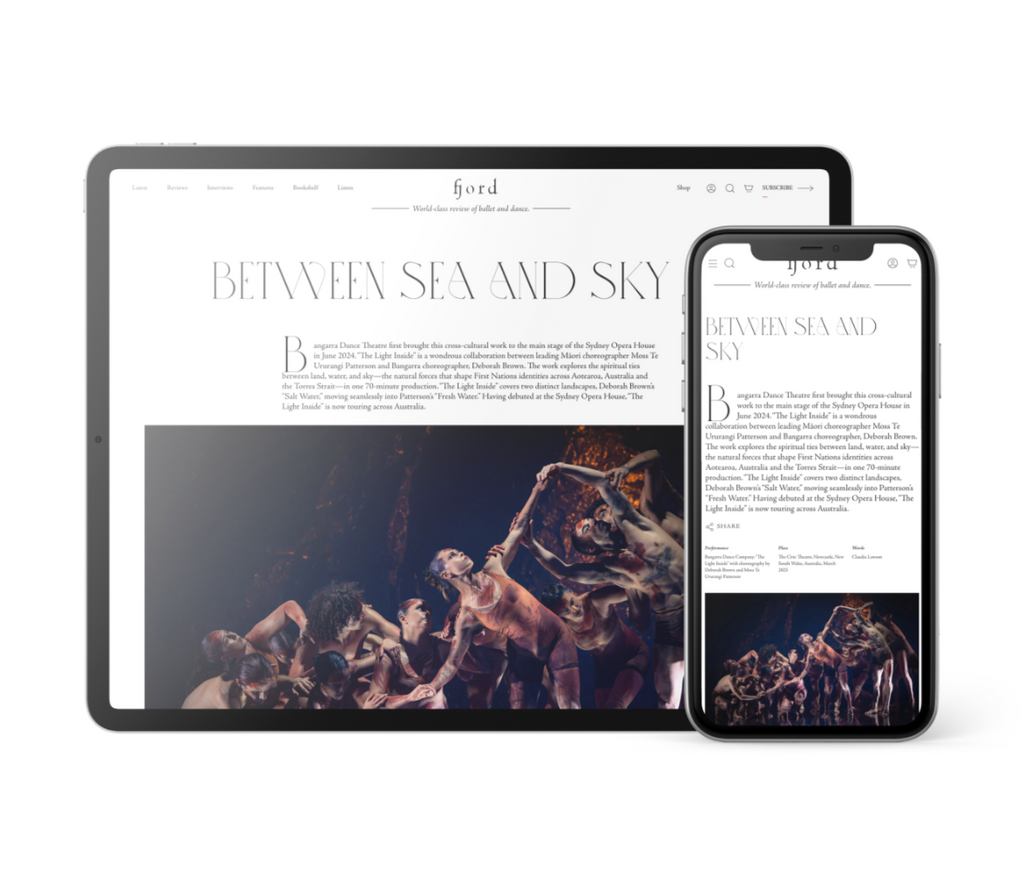Traylor’s work was strong but bite-sized at only 15 minutes, and it felt a little dwarfed when positioned alongside Charon’s 70-minute opus. Regardless, it showcased an artist with a strong viewpoint and a developing signature.
The work opened with a clown-like character (Luke Dakota Zender), peeking through the curtain, faux-smoking, coughing and moving through the crowd. The house lights remained on during this section, which caused me to ponder my own performance. As Zender singled out members of the audience, sitting next to them or pointing at them, I found my mind wandering to consider whether I would be noticed and how I would behave if I was.
As the house lights went down and the dance progressed, I relaxed, but the dancers seemed to amp up. The music was frantic and circus-like at first, as the performers eagerly introduced themselves through movement and established their unique and distinctive characters. Then, after a moment of stillness, a slower score was introduced. At this point, the characters began to shed their layers (literally, as well as figuratively), and, while remaining themselves, seemed to grow more authentic.
When the work was coming to a close, Zender, who opened the piece, was laid bare, having shed both their performativity and their clown collar, suit jacket, and skirt. Miche’ Smith ended the piece, in front of the curtain, eyes wide, arms moving like a frantic conductor. As the lights went down, she seemed to relax too, just like I had.












comments